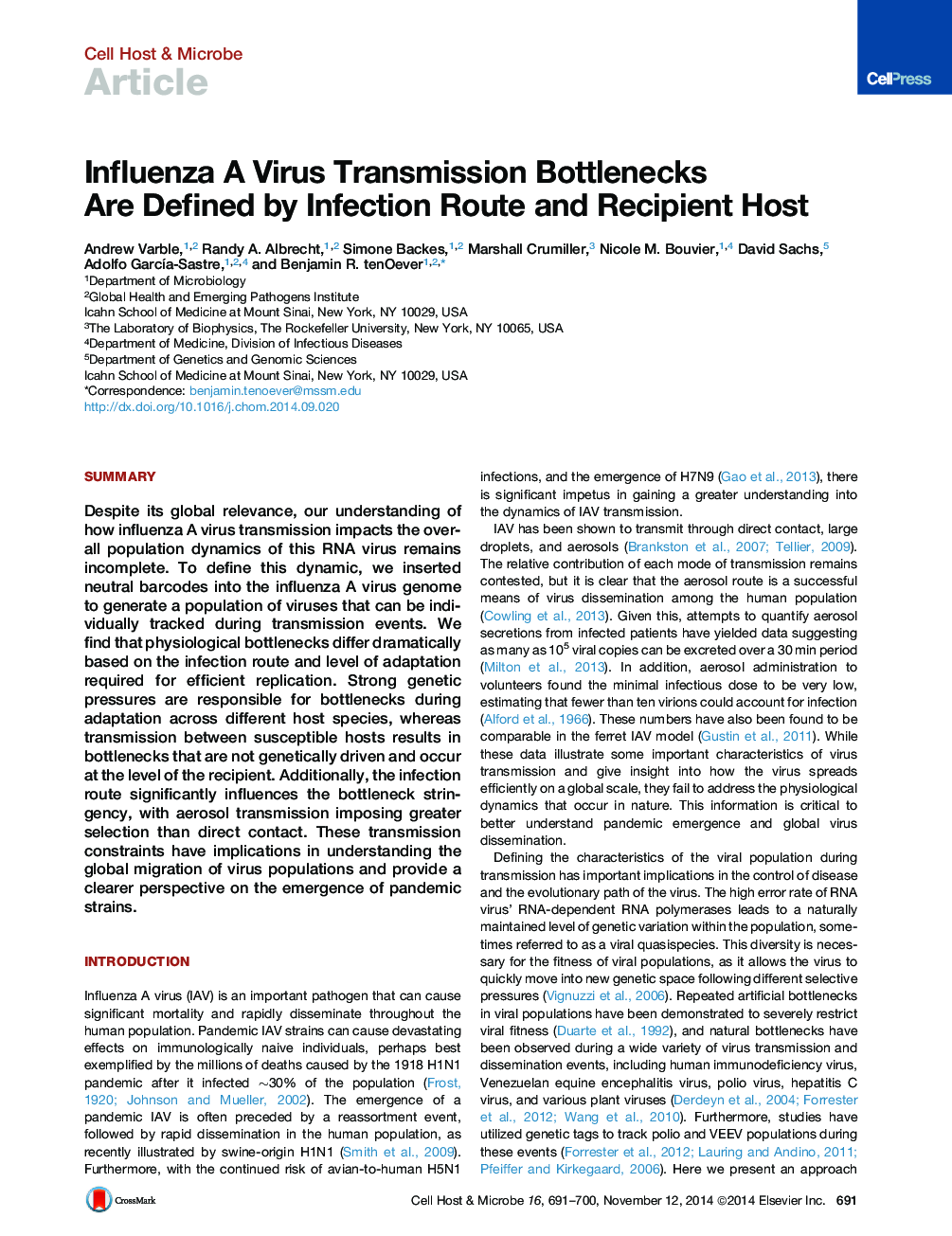| Article ID | Journal | Published Year | Pages | File Type |
|---|---|---|---|---|
| 4361035 | Cell Host & Microbe | 2014 | 10 Pages |
•Influenza A virus transmission involves sequence-dependent and -independent bottlenecks•The transmission route affects bottleneck stringency and initial virus population diversity•Virus population selection during transmission occurs at the level of recipient
SummaryDespite its global relevance, our understanding of how influenza A virus transmission impacts the overall population dynamics of this RNA virus remains incomplete. To define this dynamic, we inserted neutral barcodes into the influenza A virus genome to generate a population of viruses that can be individually tracked during transmission events. We find that physiological bottlenecks differ dramatically based on the infection route and level of adaptation required for efficient replication. Strong genetic pressures are responsible for bottlenecks during adaptation across different host species, whereas transmission between susceptible hosts results in bottlenecks that are not genetically driven and occur at the level of the recipient. Additionally, the infection route significantly influences the bottleneck stringency, with aerosol transmission imposing greater selection than direct contact. These transmission constraints have implications in understanding the global migration of virus populations and provide a clearer perspective on the emergence of pandemic strains.
Graphical AbstractFigure optionsDownload full-size imageDownload high-quality image (429 K)Download as PowerPoint slide
